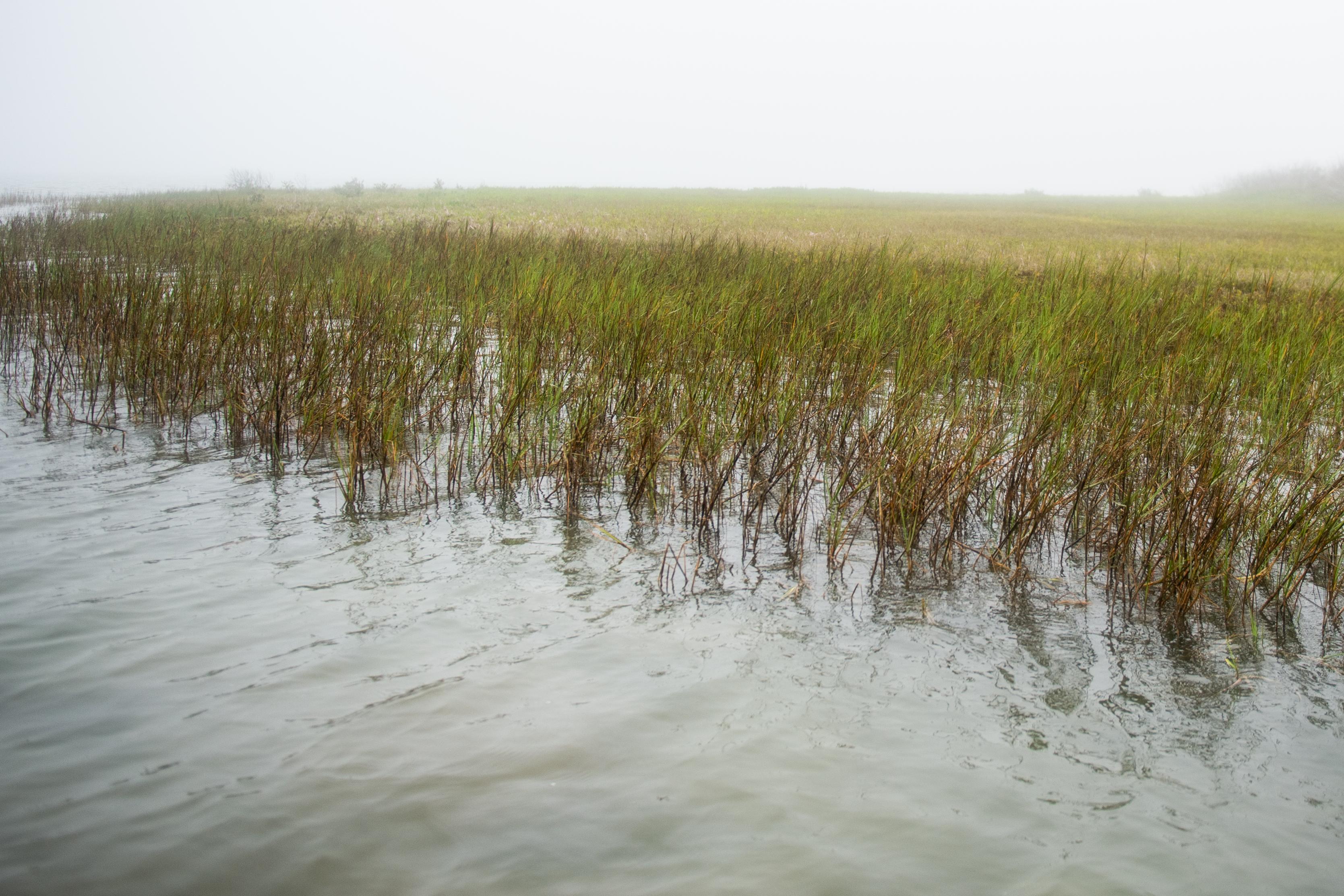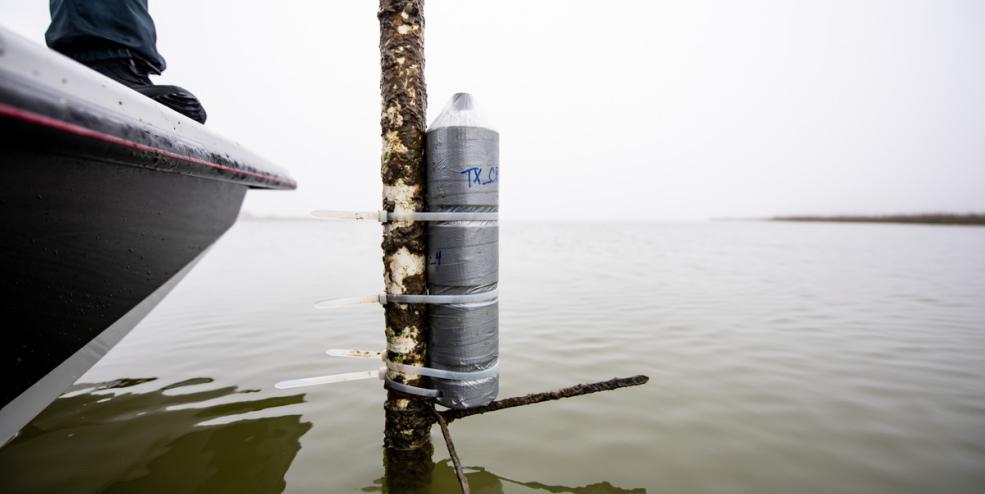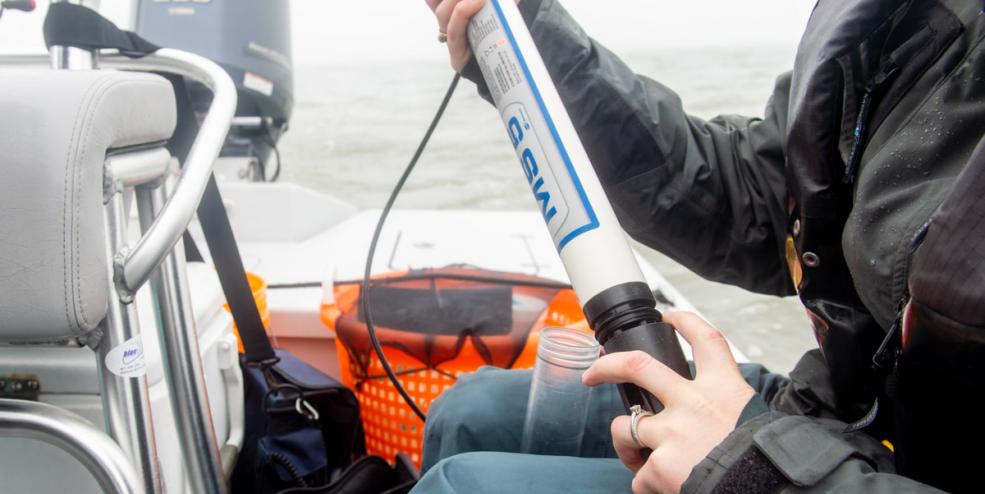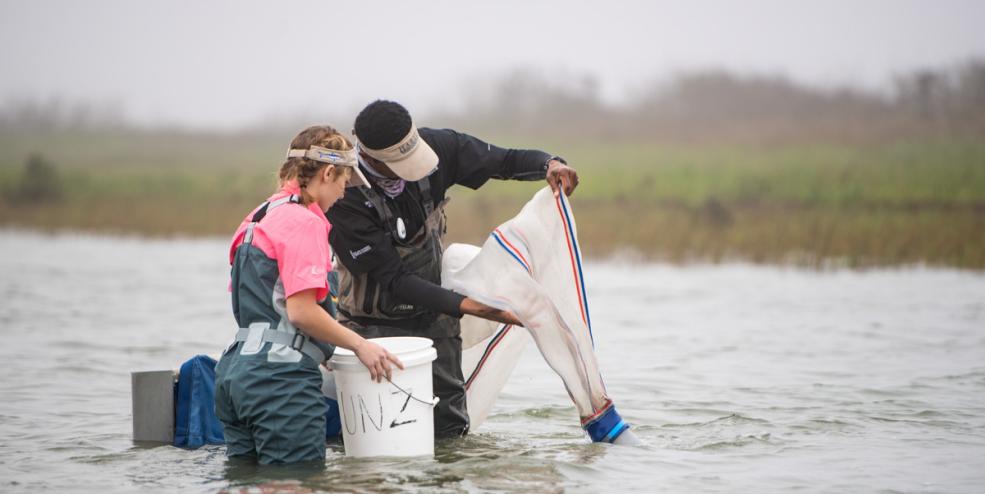Matagorda Bay Ecosystem Assessment

Spanning over 400 square miles of the Texas coast, Matagorda Bay is unique in that it maintains a relatively small human population. The bay supports a number of industries important to the Texas economy, including commercial and recreational fishing, agriculture and tourism, while serving as a rich resource for fish and wildlife. It also hosts endangered sea turtles, and provides a food source for several species of threatened shorebirds — the last wild flock of whooping cranes can be found hunting in its marshes. Despite its economic and environmental value, little research has been conducted on the distribution and health of the bay's many habitats and their importance to the ecosystem.
The Center for Sportfish Science and Conservation is partnering with the Texas Comptroller of Public Accounts’ Natural Resources Program to develop comprehensive economic and ecological information and tools communities can use to sustain economic development while protecting natural resources and species. The Natural Resources Program will provide economic data and analysis to complement the ecological research. The Sportfish Center has assembled an team of world-class sea turtle and avian biologists and marine ecologists. Along with their respective research teams, this group is highly qualified and fully capable of addressing the most pressing issues in endangered species conservation for sea turtles but also other endangered species (e.g., coastal birds) that rely upon these ecosystems. These experts, led by the Sportfish Center, will study habitats used by a suite of imperiled, threatened and endangered sea turtle and bird species as well as the potential impacts of evolving environmental factors.
This West Matagorda Bay project takes an ecosystem-based management approach, examining the role single species play in ecosystem food webs, habitat, and water quality. While managing species on an individual basis can provide valuable biological information, to really understand environmental health it’s important to gain an in-depth understanding of the fundamental underlying ecological processes and stressors (e.g. flooding and sea level rise) that interact to support a resilient ecosystem. This could not be more relevant than when managing endangered species — knowing their biology is important, but understanding of the ecosystem that supports these fragile populations is paramount. Sea turtles and endangered bird populations in Texas’ estuaries are a perfect example of where robust science on the estuarine ecosystem that supports these endangered species can greatly enhance recovery and long-term sustainability of their populations. Data generated from an ecosystem-based approach like this study will be crucial to developing effective restoration and conservation strategies, and can be used to identify and prioritize areas for long-term protection of sea turtles and many other species.
Additional funding thru the Matagorda Bay Mitigation Trust was also awarded to complete a complementary ecosystem assessment in the Colorado River Delta which supports some of the most critical nursery habitat in the Matagorda Bay ecosystem. Not only will this project provide a comprehensive ecological baseline for future comparison and planning, it will also develop design and implementation strategies for habitat restoration aimed at maximizing available freshwater inflow and water quality to support these critical nursery grounds during extended drought.
Project Goals
- Inform the development of effective restoration and conservation strategies for endangered sea turtles;
- Explore opportunities for mitigation and restoration activities to inform priority areas for conservation relative to potential impacts from flooding and sea rise with regard to bird species of interest by implementing a multi-disciplinary ecosystem assessment for West Matagorda Bay;
- Inform the viability of future habitat restoration efforts in the Colorado River Delta particularly for critical nursery habitat.
Research Objectives
- Develop detailed habitat maps forming the basis for the study. As the primary function of an estuary stems from foundational habitats, this mapping will allow assessments and visualization of biological and physical characteristics of the estuary on a seasonal and temporal basis;
- Establish an extensive animal tracking component for key species of interest. This will allow an understanding of distribution, migration, and movement patterns;
- Perform detailed ecological assessments of specific habitat communities that will allow us to assess macrofaunal density, bird abundance, richness, community composition, food base, and habitat trends on a seasonal basis to make predictions about temporal changes and ecological hotspots of productivity;
- Perform strategic water quality monitoring to establish baselines and better understand changing environmental conditions on nutrients, plankton and other food base factors as a measure of productivity;
- Conduct detailed food web evaluations using isotopic and amino acid analyses to determine key ecological interactions among species of interest and their habitats;
- Evaluate the influence of habitat arrangement and dynamic changes in water quality and quantity on a monthly basis to understand changes to habitat suitability for species of interest;
- Engage the Matagorda Bay scientific, management, and policy communities and other stakeholders in the process to gather feedback and give updates as to the status of this project;
- Perform a detailed benthic habitat characterization of the Colorado River Delta study area to provide an updated habitat baseline;
- Conduct a comprehensive ecological assessment linking the distribution of species and their habitats spatially within the Colorado River Delta study area;
- Complete a hydrological assessment to better understand water availability, flow paths, and topography in the Colorado River Delta.
Links




